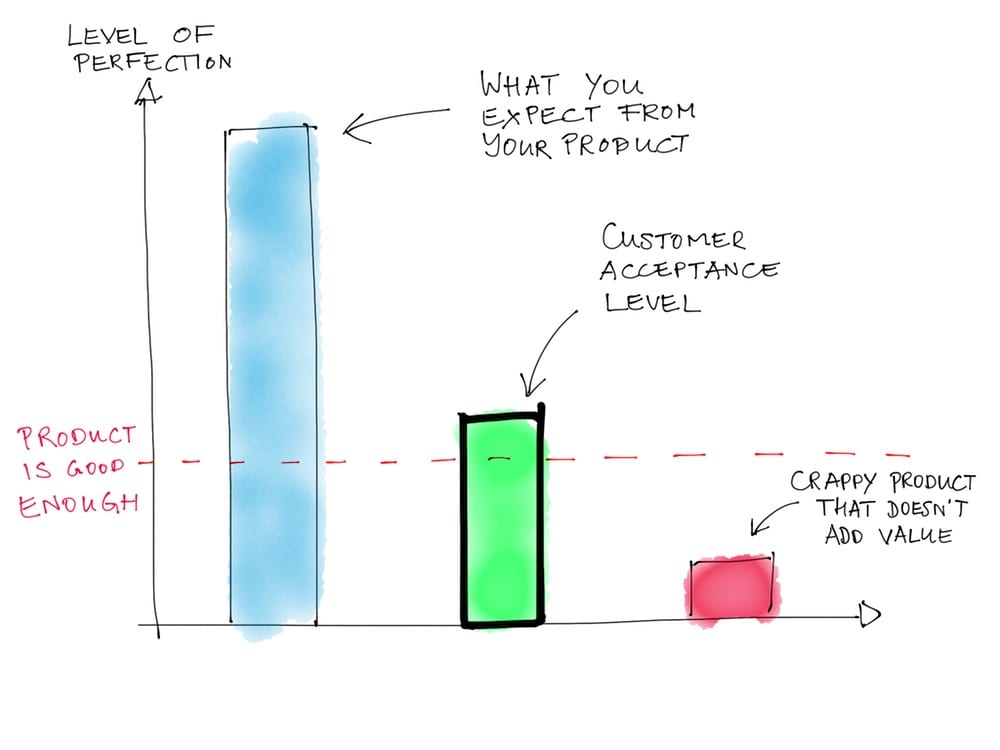3 Crucial Mistakes To Avoid When Creating Your First Product
The road to success is plastered with many pitfalls. Pitfalls are great, because they will only make you stronger. The more you…

The road to success is plastered with many pitfalls.
Pitfalls are great, because they will only make you stronger.
The more you “fail”, the more experienced you become.
It’s like breaking a bone. The more you break it, the thicker it becomes (Look at Jackie Chan’s nose!)
Nevertheless, on your journey to fame and fortune you don’t always have to step into every trap.
The smartest thing you can do is to look at others who already walked the path and avoid making the same mistakes.
In this article I want to share with you the most crucial mistakes that beginners make when creating the first product.

So be smart, pay attention and don’t repeat the same.
1. Not validating your idea early enough
People say that love makes one blind.
There is some truth to it, especially if it is your own baby. Sometimes it is really hard for us to let go and to admit that our idea might not be the best one.
You might love your baby so much that you start working on it for months to finally reveal it to the world … only then to realize that no one is actually interested.
That would be devastating, right?
Early validation of an idea is crucial for a business in order to save energy, resources and most importantly time.
So before jumping into manufacturing or developing of your product, you can try the following things to validate your idea and see if there is a potential market:
- create a quick landing page and let people know what product / service you offer and what the benefits are.
- create a survey to ask people if they are looking for a product that you are planning to offer.
- Checkout communities on Facebook to get feedback
- Use Social Media like Instagram to share first prototypes/renderings and see how people react
The most important thing here: try not to spend too much time on it. From first idea to validation is should not take you longer than 30 days.
The faster, the better!
Everything that takes you longer is a waste of time.
After these 30 days you should have enough feedback to know if you should develop your idea further.

Baaaam, you just saved a shit load of time and money.
2. Trying to solve all problems at once
How do I promote my product?
What are potential partners?
How will the packaging look like?
What’s the best way to distribute my product?
Where should I rent a warehouse? …
There are so many unknowns when you start everything for the first time.
All these questions are valid and necessary to think about. But don’t make the mistake of trying to solve all of them at once.
I tried it. It didn’t work. It only created more stress for me than necessary.
You don’t need to think about packaging if you don’t even have a product.
You don’t need to think about partners if you have no customers.
You don’t need to think about renting a warehouse if you have no clue how to get your product shipped to you.
Got it?
Don’t try to build the roof of a house if the foundation is weak.
Solve one problem at a time. Step by Step.
- make sure your product solves a problem for people
- see if people are willing to buy your product
- test your product (prototyping!)
- create your product
- think about how to get your products to customers
- store your product
- meet the demands
- take care of your customers
- scale your business
- automate your business

3. Wasting time on perfectionism
Overthinking is a very common disease that many of us have.
It is a great attitude though. The eagerness to always strive for the best. The willingness to create the best product in the market and make your customers fall in love with it.
The problem: there is no such thing as a perfect product. There will be always something that can be improved.
Think about software. Can you imagine a day where you don’t have to install bug fixes anymore?
Probably not. Bugs are so common in the software industry that we accept the fact of purchasing an unfinished product.
But customers don’t complain. Why? because their perception of a good product is different than yours.
Take a look at the following illustrations:

Most of the time we aim for the perfect product but it is very surprising how much lower the acceptance level for customer is.
Make sure that your product at least delivers the baseline and a bit more.
If you sell a camera, it should be able to take pictures.
If you sell coffee, it should taste like coffee.
Bad example, but I think you are clever enough to get the gist of it.
However, never ever promise something that you cannot deliver, otherwise you will lose trust of your customers. And trust is very difficult to restore. It can be lost in a split second but takes ages to recover.
Therefor the most important “rule” when starting out is: Move fast and build trust!
